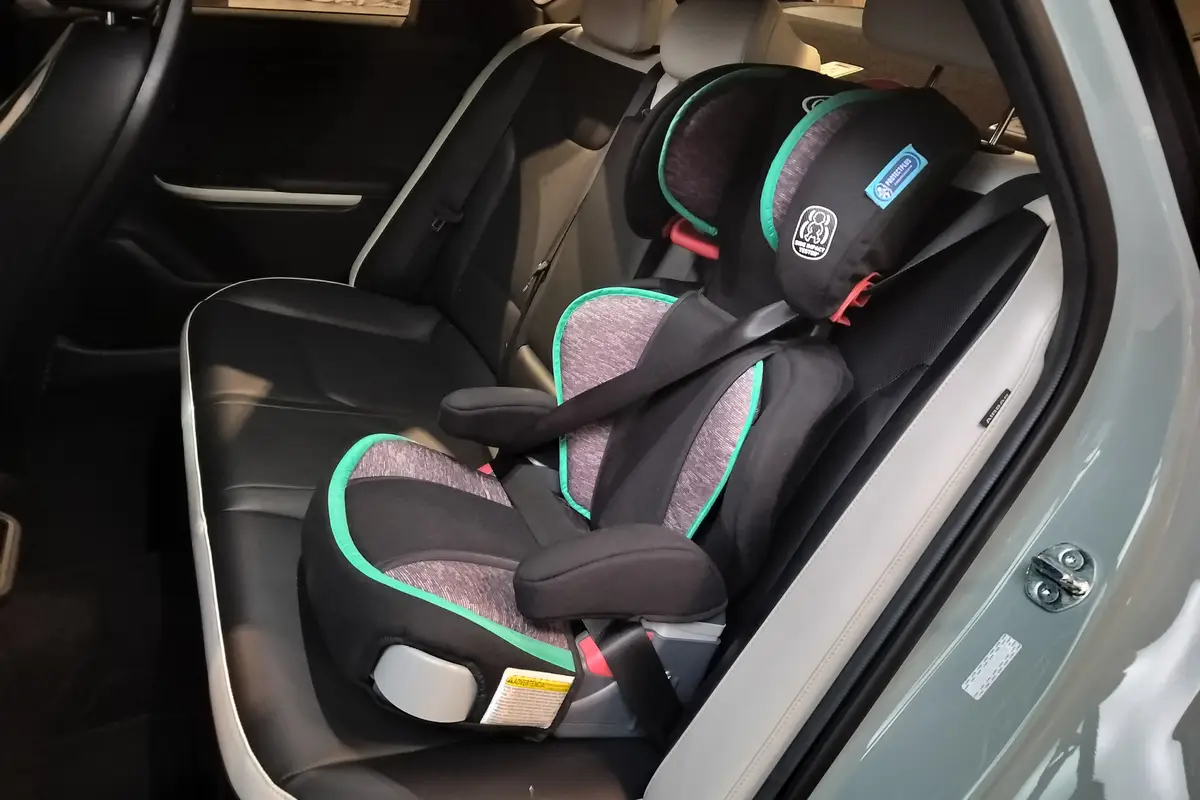Our view: 2009 Cadillac CTS

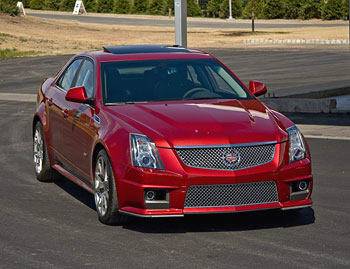
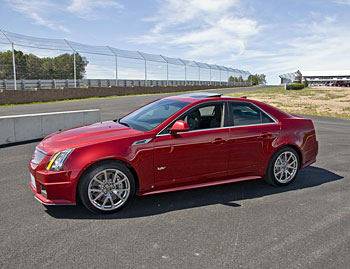
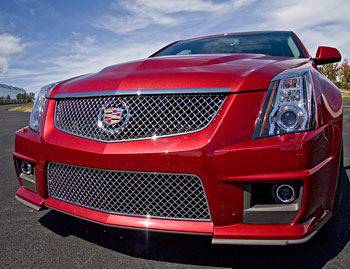
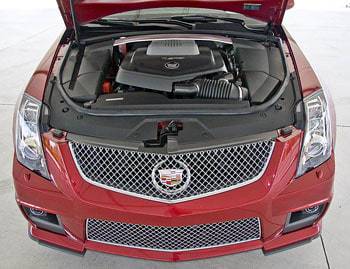
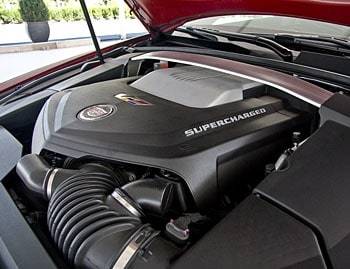
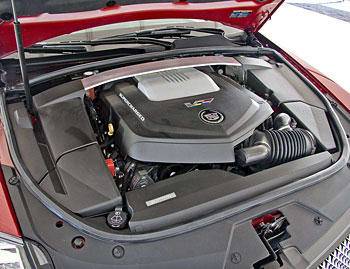
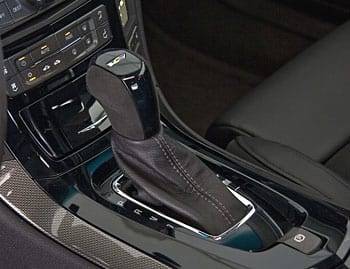
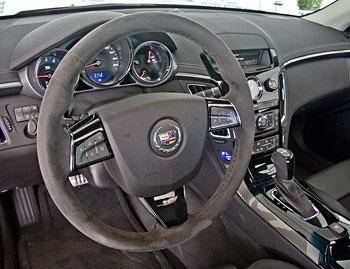


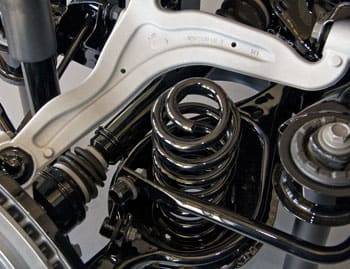
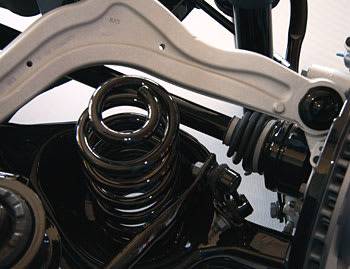
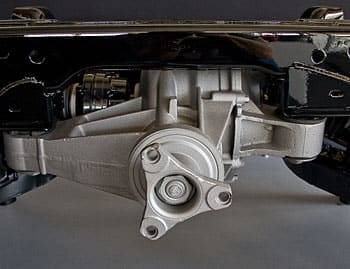
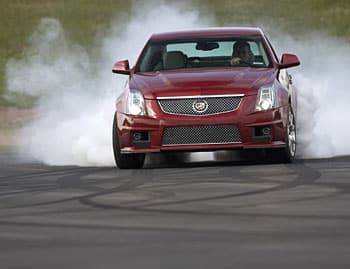
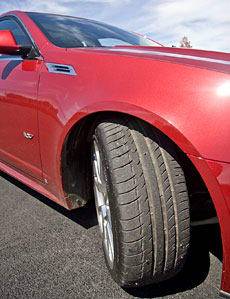
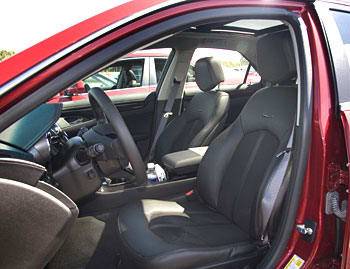

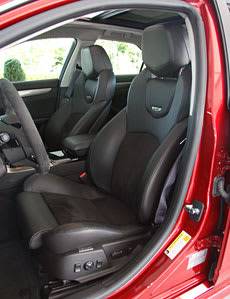
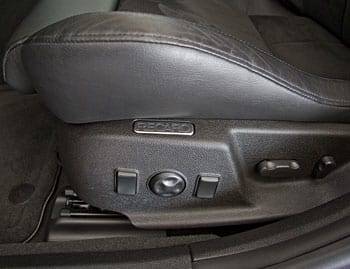
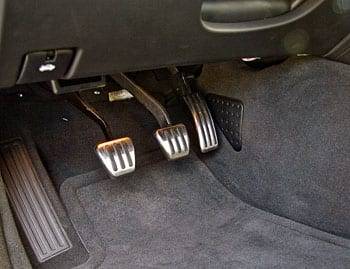
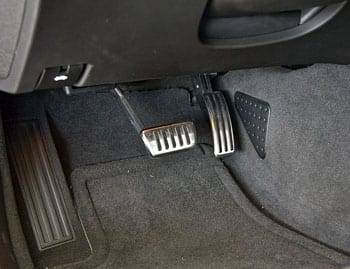
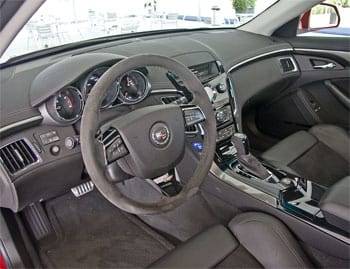
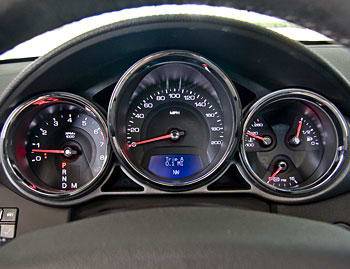
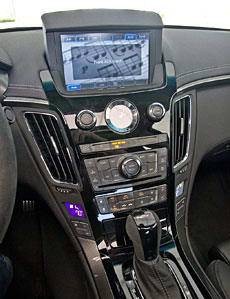
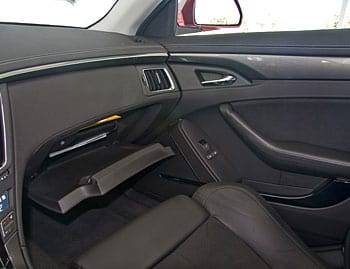
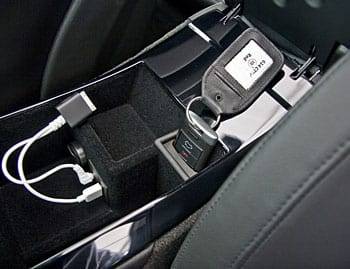


























Editor’s Note: The regular CTS is virtually unchanged from 2008 when it was completely redesigned. The review below covers the performance-oriented CTS-V, which is new for 2009. For the details on the regular CTS, check the 2008 review and see pricing and any other differences in the side-by-side comparison.
Having driven the V-Series performance version of the 2009 CTS sedan, I’m pounding the gavel. Cadillac can compete with the best of them, and possibly win.
The 2009 CTS-V is a 556-horsepower monster. Wait. That sounds sloppy and a little nefarious — which, actually, one could argue the first-generation CTS-V was. Let’s call the new one a superhero, instead. It has as much in common with the Chevy Corvette as it does the regular CTS — and not just the base or Z06 Corvette, like the earlier generation did, but the new, no-compromises 2009 Corvette ZR1, a supercar by performance standards. Seem unlikely? Well, among GM models the CTS-V is second only to the 638-hp ZR1 in output, and it shares the basics of the ZR1’s supercharged 6.2-liter V-8. Other aspects sound similar: a custom-geared Tremec six-speed manual transmission, fast-acting Magnetic Ride Control shock absorbers and a claimed record lap time on Germany’s Nurburgring racetrack at the hands of a GM engineer.
0-60 mph: 4 Seconds
Cadillac will begin building the CTS-V in October, which should put it at dealerships in November, but I got a day of driving a pre-production model on the street and track. Let’s get right to the track, shall we? I had driven the ZR1 less than a week prior, so I was prepared to slip a spinal disc, but the V’s lesser power and considerably higher weight (around 4,200 pounds versus 3,324 pounds) made it less intense. That’s not to say it doesn’t go. It goes. It really, really goes — to 60 mph in 4 seconds or less. That puts it within a half-second of the ZR1.
I’d already heard these numbers, so when I was on the track, I kept wondering why the CTS-V wasn’t faster. Then I’d look at the speedometer and see that it was faster, I just hadn’t recognized it. There’s a nice exhaust sound when you really lay on it, but the CTS-V is otherwise remarkably quiet for what it is. I bemoaned the minimal moan from the ZR1’s new Eaton supercharger, but with this related unit, the sound is practically nonexistent. I suppose that’s more appropriate in a luxury sedan. (Cadillac proudly relates that Nurburgring spectators spread a misconception that the car wasn’t, as had been speculated, supercharged at all.) Tucked between the heads, the V’s supercharger provides 9 psi of boost, versus more than 10 psi in the ZR1, and is capped by a single water-cooled intercooler. It bears noting that the blown V-8 characteristically redlines at a relatively low 6,250 rpm, though the engineers say it cranks a solid 400 pounds-feet of torque at roughly 1,200 rpm, on its way to a peak 551 pounds-feet at 3,800 rpm. The torque band has a gentle rise, but it’s broad enough, and the sound level is low enough at high revs, that it’s easy to crash into the rather hard rev limiter.
Cadillac attempts to prevent this through the use of LEDs on the instrument panel that flash when you near the limit. I’m cool with this idea, but I’m not wild about the implementation, which is in the form of red “tracer” LEDs that follow the arc of the gauge needles as they rise until they’re called upon to flash urgently. They’re too much like BMW’s use of LEDs to lower the redline on a cold engine’s tachometer, or other models’ means of marking adaptive cruise control settings.
Two Transmissions, Six Speeds Apiece
The six-speed manual has a pleasing short-throw shifter and ratios matched to the engine’s hearty grunt. This generation gets the CTS-V’s first automatic in the form of a six-speed with fully automatic Drive and Sport modes, as well as sequential-manual shifting via buttons on the backsides of the steering-wheel spokes — or by nudging the stick fore and aft. When in manual mode, a large red numeral appears in the instrument panel to indicate the current gear. Brick-wall rev limiter or not, I respect that the transmission holds each gear unless you shift. I have less respect for the buttons on the steering wheel rather than paddles on the column, but my respect for paddle shifting is limited to begin with. It’s really only useful on a track, which doesn’t explain why GM Performance Division’s John Heinricy set his purported Nurburgring record in automatic Sport mode — let alone why he didn’t attempt it, or perhaps achieve it, with the manual gearbox.
I’ve heard the assertion before of automatic transmissions smart enough to outdo a skilled driver on a racetrack, and I’ve been surprised to experience one or two. No matter how many sensors and algorithms it’s claimed to call upon, this automatic isn’t one of them. In my laps the thing was late to downshift, occasionally hunted and generally blew my timing, and probably my time, though we weren’t clocking our laps. According to GM, the manual has a top speed around 190 mph in 6th, whereas the automatic hits its electronic limit at 175 mph in 5th. I can’t accept that a driver of Heinricy’s caliber, given time, couldn’t beat the record by rowing his own gears.
Magnetic Ride
At upstate New York’s private Monticello Motor Club, the CTS-V carved up the brand-new and challenging course like a Lamson & Goodnow knife through the finest filet mignon. (Step aside, Henckles!) The car’s poise, again, made it easy to drive fast without knowing it. Introduced years ago by Delphi, the Magnetic Ride Control has been updated with improved algorithms and tuned specifically for the CTS-V, on the fly, by laptop-computer jockeys riding shotgun. The ferrous fluid that’s the secret behind these high-tech shock absorbers has also been improved to react more quickly to the electromagnetic field that varies its viscosity and the damper’s firmness. If this sounds complex, it is, but only behind the scenes. It monitors wheel motion, throttle and steering position and does the work for you, though a button allows you to choose Sport or Touring mode.
I like having the selection, but on normal roads I felt minimal difference in ride quality. It mainly seems to control body motions, allowing a bit more body roll in Touring than in Sport. On the track I thought the CTS-V was more balanced in Touring mode. It allowed the car to heave its weight around more, which tends to compromise roadholding, but the weight distribution felt more neutral. Sport mode loosened up the tail more, even on smooth, fresh pavement.
Compared to the first-generation CTS-V, though, this one’s rear is anything but loose. Gen 1 was especially skittish under heavy standing-start acceleration, so the new car’s rear axle is comprised of asymmetrical half-shafts. They’re roughly equal in length, but one is small and solid where the other is hollow and larger in diameter, which the engineers say helps cancel the vibrations that caused the older axle to oscillate. It’s clever thinking that has no drawback I was able to detect. Because the hardware can handle the torque, Cadillac uses no artificial torque management like low-gear throttle dialback. Controlling the car is entirely up to you — and to the electronic stability system, should you choose to leave it on in regular or Competition mode, which lets you slide about more.
A Docile Street Cruiser
If you haven’t shopped for a car in a number of years, you might not know that sports and performance cars don’t sacrifice comfort nearly as much as they used to, especially when you’re doling out big bucks. I’m not dwelling on the CTS’ road performance because it’s a non-issue. Though it’s firmer than a regular CTS, the ride quality is more than merely livable, and the interior is as quiet as you’d want in a luxury car. Even with the manual transmission, the twin-disc clutch is reasonably light and easy to modulate. You could easily drive this car every day, and you’d want to.
The first generation wasn’t as refined as it could have been; it felt like the powertrain was added as an afterthought, and that doesn’t make for unified performance. In the 2009, all the systems work together beautifully. The one link that could use strengthening is the steering, which doesn’t have the feedback of the best track cars, but it is reasonably sensitive to subtle corrections, where the ZR1’s occasionally had to be manhandled. Overall, you really feel like you’re driving the CTS-V, and that’s not necessarily true of some extremely capable performance cars. Though Mercedes-Benz’s AMG models have all the elements in place, with track times to match, they never feel enough like a driver’s car to me.
The Lexus IS-F is smaller and a good 500 pounds lighter than the CTS-V, but its dynamics need work and I just can’t abide that eight-speed automatic and no manual option. I don’t know if I’d take a CTS-V over a BMW M3, but I suspect I’d take it over an M5, which is similar in size. The M5 isn’t very light either; its shifter feels disconnected and I never cared much for the styling. Consider the price and there’s no contest. The M5 commands close to $85,000, and the 2009 CTS-V, though not officially priced at the time of this report, is estimated to come in at less than $60,000 including destination charge and an expected gas-guzzler tax. (EPA figures also aren’t final, but Cadillac says we’re looking at mpg in the teens. For what it’s worth, I put on 90 miles at speeds between 55 and 70 mph, and the trip computer showed an average 21.9 mpg. There was no tailwind, but I came down 1,300 feet of elevation, all told.)
Optional Features
The base CTS-V includes all the important bits mentioned above, plus Z-rated Michelin Pilot Sport 2 summer performance tires and either transmission for the same price. Options include suedelike material on the steering wheel and shift knob, which I liked, for a couple hundred bucks. Stainless-steel-capped pedals will cost about the same, as will an option for real-wood trim. You’ll pay somewhere north of $2,000 for optional Recaro sport seats, which are higher in overall quality, in my opinion, and have many more adjustments, including side bolsters and cushion length. You need these if you’re going to spend much time on a track, and you might consider the differential cooler and the optional brakes. Though they’re painted red instead of silver, the calipers in this setup are the same six-piston front and four-piston rear units, with rotors that are essentially the same except for being two pieces to better withstand heat and resist fade. They’ll likely cost more than $1,000. Most options will be available a la carte, and Cadillac says a loaded CTS-V will be in the upper-$60K range.
I’m not the only one who’s bullish on the CTS-V. Cadillac will export it to Europe for the first time, in left-hand drive only. It should surprise and satisfy anyone with the sense to give it a try and the fortitude to be seen in an American luxury car. Someday, someone on Germany’s famed autobahn is going to blow away one of their vaunted domestic sport sedans. Someone in a Cadillac. I wish I could be there.
| Send Joe an email |

Former Executive Editor Joe Wiesenfelder, a Cars.com launch veteran, led the car evaluation effort. He owns a 1984 Mercedes 300D and a 2002 Mazda Miata SE.
Latest news
